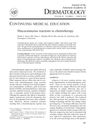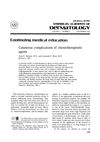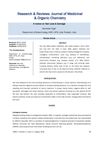Mucocutaneous Side Effects of Antineoplastic Chemotherapy
November 2004
in “
Expert opinion on drug safety
”
alopecia anagen effluvium cyclophosphamide hyperpigmentation onycholysis stomatitis photosensitivity hydroxyurea taxanes corticosteroids antihistamines hypersensitivity reactions epithelial necrosis hair loss nail changes skin darkening mouth sores skin sensitivity skin ulcers allergic reactions skin cell death

TLDR Chemotherapy often causes hair loss, nail changes, and mouth issues, but these are usually manageable.
Antineoplastic chemotherapy often caused mucocutaneous side effects, including alopecia, nail abnormalities, and mucous membrane issues. Alopecia, primarily due to anagen effluvium, typically began 2 weeks after treatment and was usually reversible, though some drugs like cyclophosphamide could cause permanent hair loss. Nail changes included hyperpigmentation, Beau lines, and onycholysis. Mucous membrane involvement, such as stomatitis, was frequent and could lead to infections. Skin hyperpigmentation was common, with various patterns and mechanisms, including postinflammatory changes and photosensitivity. While these side effects were often severe, they rarely necessitated stopping the drug, though dosage adjustments and preventive measures were important. Specific drug-related effects included hydroxyurea-induced leg ulcers and pseudodermatomyositis, and capillary leak syndrome from taxanes. Prevention and treatment strategies varied, often involving corticosteroids and antihistamines. Serious complications like hypersensitivity reactions or epithelial necrosis sometimes required dosage modifications or changes in treatment. Awareness and management of these side effects were crucial for improving the tolerance of chemotherapy treatments.


